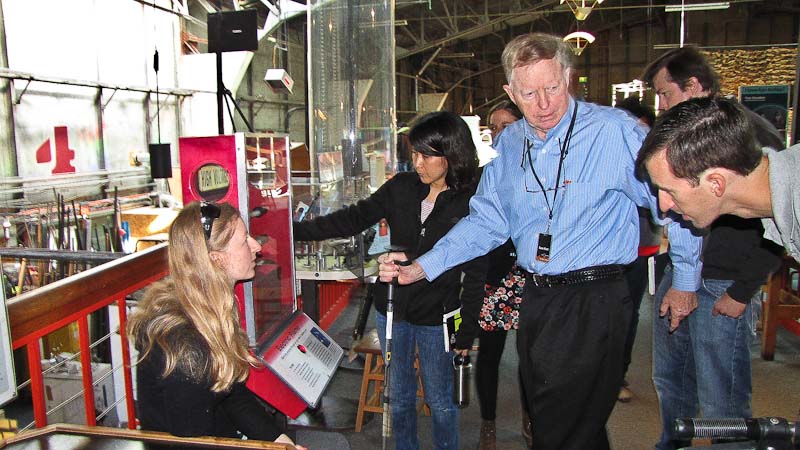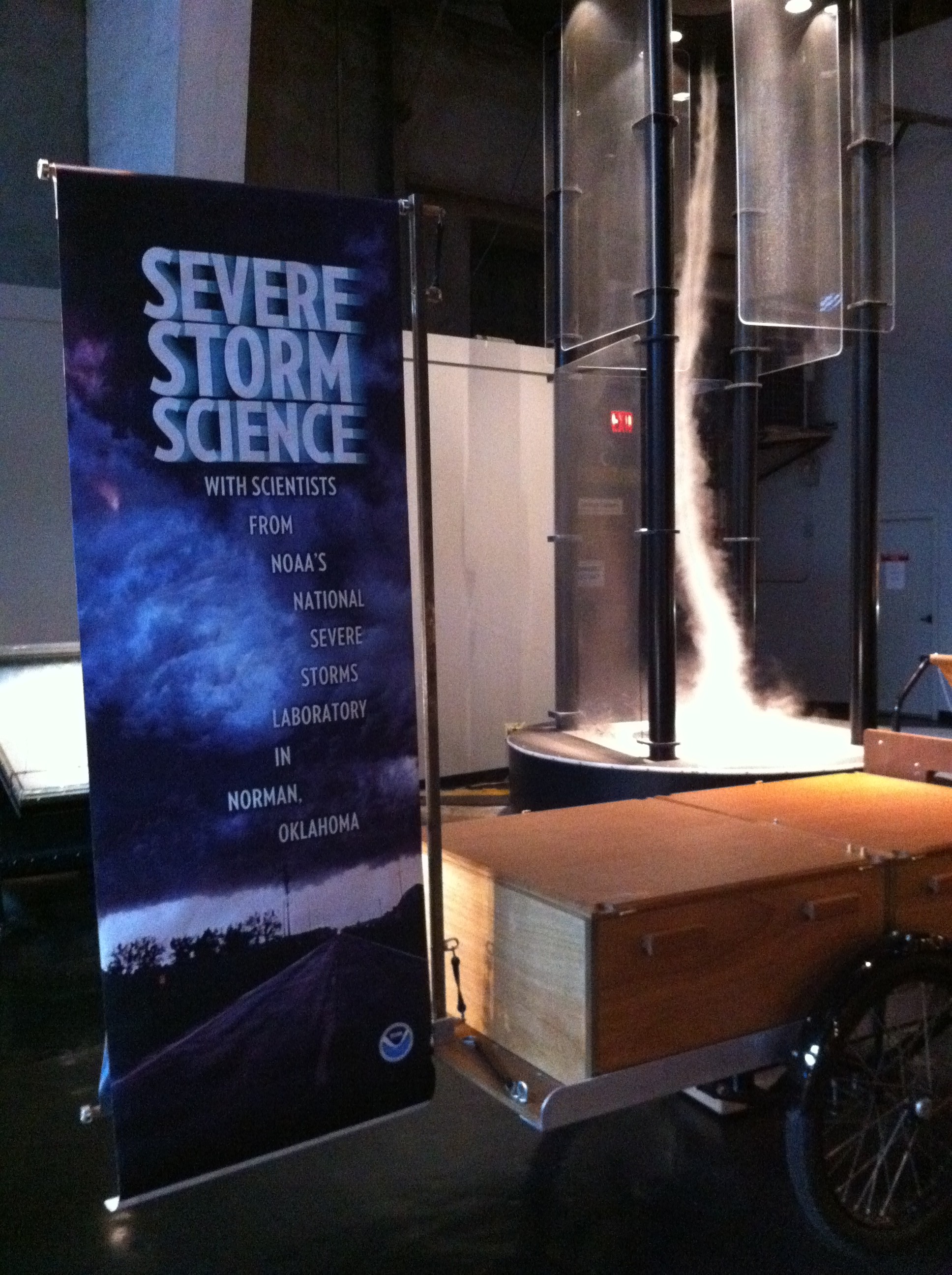The Museum of Science in Boston, with funding from the National Science Foundation, has developed a special exhibit on nowcasting, called WeatherWise – a short-term weather forecast covering zero to three hours. The exhibit is built around the static electricity generator that was used by Robert Van de Graaff as a particle accelerator in his famous experiments of the 1930s.
The exhibit includes several pieces that make use of the Warning Decision Support System (WDSS-II), a suite of severe weather analysis and detection algorithms that have been developed at NSSL. One of the exhibits, for example, features the animated image of Mish Michaels, local TV meteorologist from WBZ which partnered with the Museum to develop the exhibit. Mish’s virtual pointer automatically points to the strongest storm cell in the vicinity of the museum, as identified by WDSS-II, and her words change to reflect the characteristics of the storm cell. A public version of the Nowcasting tool is available at http://www.mos.org/weatherwise.
The real-time radar quality-control algorithms make the major difference, according to John Meyers, who implemented the WDSS-II system, and Dr. Dan Davis, an Education Associate who worked to enable data from nearby radars to be readily understandable by the general public. The WDSS-II system’s polygon monitoring capability is used to automatically page certain museum staff when there is severe weather detected in the area, so that they can present the real-time data to the public in one several possible venues.
The Museum of Science receives up to 2 million visitors a year.
Background: The Warning Decision Support System – Integrated Information (WDSS-II) is the second generation of a system of tools for the analysis, diagnosis and visualization of remotely sensed weather data. The current NSSL Warning Decision Support System – Integrated Information (WDSS-II) uses these advancements and now contains over 100 multi-radar/sensor applications of all kinds.
Significance: Increases public awareness of NSSL’s research efforts to better forecast and warn of hazardous weather.



